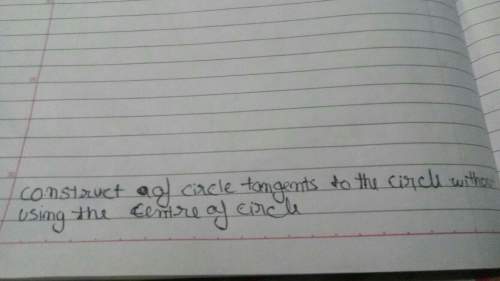
Mathematics, 28.07.2021 15:50 adanrodriguez8400
Products A, B, and are sold door to door. Product A costs $3 per unit, takes 10 minutes to sell (on the average), and costs $0.50 to deliver to the customer. Product B costs $5, takes 15 minutes to sell, and is left with the customer at the time of sale. Product C costs $4, takes 12 minutes to sell, and costs $1.00 to deliver. During any week a salesperson is allowed to draw up to $500 worth of A, B, and C (at cost) and is allowed delivery expenses not to exceed $75. If a salesperson's Selling time is not expected to exceed 30 hours (1800 minutes) in a week, and if the salesperson's profit (net after all expenses) is $1 each on a unit of A or B and $2 on a unit of C, what combination of sales of A, B, and C will lead to maximum profit and what is this maximum profit?

Answers: 1


Another question on Mathematics

Mathematics, 21.06.2019 14:30
What is the order of operations for 2 + (3 - 9) ÷ -3 · 4 in number order 1. subtraction 2. division 3. addition 4. multiplication
Answers: 1

Mathematics, 21.06.2019 17:30
Cora bought a package of erasers. there are 4 pink erasers and 12 blue erasers. what is the ratio of pink erasers to blue erasers?
Answers: 2

Mathematics, 21.06.2019 18:00
Suppose sat writing scores are normally distributed with a mean of 497 and a standard deviation of 109. a university plans to award scholarships to students whose scores are in the top 2%. what is the minimum score required for the scholarship? round your answer to the nearest whole number, if necessary.
Answers: 2

Mathematics, 22.06.2019 00:20
In the next 10 years, how do you think hipaa guidelines will affect the roles, responsibilities and tools of a medical transcriptionist
Answers: 1
You know the right answer?
Products A, B, and are sold door to door. Product A costs $3 per unit, takes 10 minutes to sell (on...
Questions






Mathematics, 18.03.2021 01:00

Mathematics, 18.03.2021 01:00

Computers and Technology, 18.03.2021 01:00






Chemistry, 18.03.2021 01:00




Chemistry, 18.03.2021 01:00





